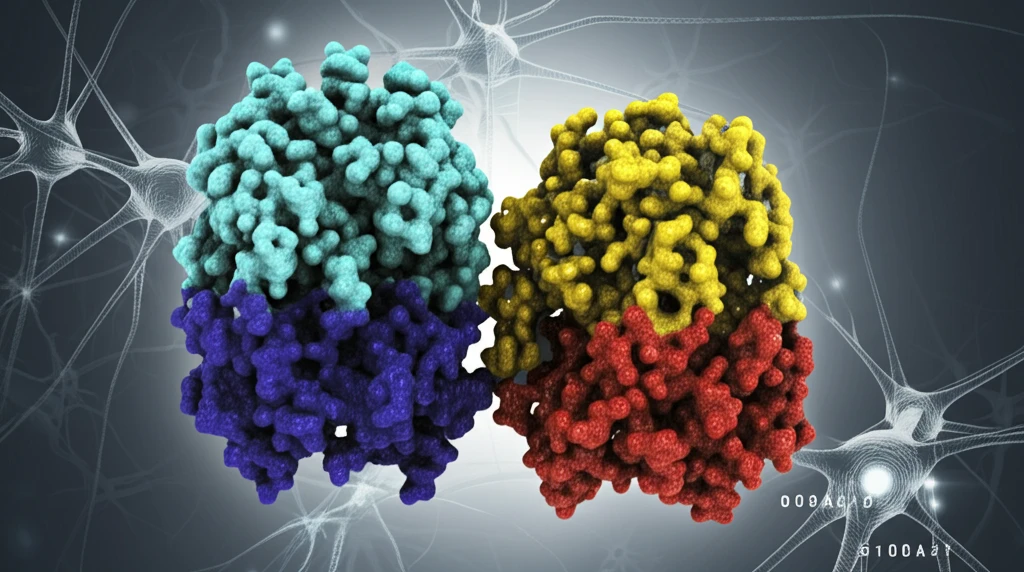
Unlock the Secrets of Cellular Stress: How STIP1 and S100A1 Interaction Could Revolutionize Brain Health
"Delve into the molecular dance between STIP1 and S100A1 and discover how their intricate relationship offers a new path for understanding and treating neurodegenerative diseases, using the Power of Proteins."
Our bodies are constantly under siege from various stressors, both internal and external. At the cellular level, these stresses can disrupt normal functions, leading to a cascade of problems, particularly in sensitive tissues like the brain. Central to managing this cellular stress are two proteins: Stress-Inducible Phosphoprotein 1 (STIP1) and S100A1. These proteins are involved in a complex interaction that scientists are now beginning to understand, and it's this understanding that could pave the way for revolutionary treatments for neurodegenerative diseases.
STIP1 acts as a crucial coordinator in the cell, helping other proteins, known as heat shock proteins (Hsp70 and Hsp90), to fold correctly. This folding process is essential for proteins to function properly; when it goes awry, it can lead to the accumulation of misfolded proteins, a hallmark of diseases like Alzheimer's. Meanwhile, S100A1, a calcium-binding protein, has been found to influence how STIP1 interacts with these heat shock proteins. The relationship between STIP1 and S100A1 is like a delicate dance, where each protein's actions affect the other, and understanding this dance is key to maintaining cellular health.
Recent research has illuminated the molecular basis for the interaction between STIP1 and S100A1, revealing how they bind and influence each other's functions. These findings not only deepen our knowledge of cellular stress mechanisms but also highlight potential therapeutic targets for neurological disorders. By manipulating the interaction between these proteins, we might be able to prevent or even reverse the damage caused by misfolded proteins in the brain.
The Molecular Basis of STIP1 and S100A1 Interaction

The study reveals that S100A1 binds to STIP1 through specific regions called tetratricopeptide repeat (TPR) domains. STIP1 has three TPR domains (TPR1, TPR2A, and TPR2B), each capable of binding to S100A1. Interestingly, S100A1 doesn't bind to STIP1 as a single unit but rather as a dimer—two S100A1 molecules joined together. Isothermal titration calorimetry, a technique used to measure the heat changes associated with binding events, showed that each TPR domain binds a single S100A1 dimer, but with varying strength. The TPR2B domain exhibited the highest affinity for S100A1, suggesting it plays a critical role in the interaction.
- S100A1 binds to STIP1's TPR domains as a dimer.
- Calcium binding to S100A1 is essential for the interaction.
- TPR2B domain shows the highest affinity.
- The binding involves a hydrophobic cleft exposed by calcium.
Implications for Future Therapies
The detailed understanding of the STIP1-S100A1 interaction offers promising new directions for therapies targeting Alzheimer's and other neurological disorders. By understanding the molecular basis, researchers can design molecules that specifically interfere with or enhance this interaction, potentially preventing protein misfolding and reducing the toxic effects on brain cells. The findings suggest that modulating the interaction between STIP1 and S100A1 could be a key strategy in combating neurodegenerative diseases.
